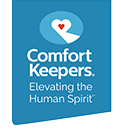Chronic obstructive pulmonary disease, more commonly referred to as COPD, is one of the most significant health problems facing adults in the U.S. COPD is a leading cause of death, falling just behind heart disease, cancer, and accidents.
Approximately 500,000 Canadians have been diagnosed with COPD, and it is estimated that an almost equal number of Canadians may also have COPD, but are not aware of it.
COPD represents a group of lung diseases, with the two most common being emphysema and chronic bronchitis. COPD is a progressive disease that becomes increasingly severe with age.
Symptoms of COPD include:
- Constant coughing
- Wheezing
- Shortness of breath
- Coughing up mucus
- Tightness in the chest
Because of its progressive nature and with increased age as a leading factor, there is a greater prevalence of COPD in adults 65 years of age or older. The good news is that many adults can easily reduce their risk of COPD through lifestyle management.
According to the Canadian Lung Association smoking is the number one cause of COPD. Unsurprisingly, secondhand smoke is a significant risk factor as well. Research also suggests that there may be a link between poor air quality and COPD.
Seniors should take the following steps to reduce their risk of COPD:
- Older adults that smoke should get support from a primary care physician and take steps to quit. There are many programs, services, and products that can help.
- Seniors should avoid contact with secondhand smoke whenever possible.
- Reducing exposure to air pollution can help reduce symptoms. Many cities issue poor air quality warnings – when these warnings are in effect, seniors should limit outside activities.
- Seniors should avoid airborne irritants (chemicals, fumes, etc.) in the home.
- A healthy diet and exercise plan, with direction from a physician, can improve lung function and overall health.
- Older adults should understand the impact of aging on their respiratory system and how to reduce their risk of any related diseases, illnesses, or conditions.
- Doctors may recommend getting vaccinations for both influenza and pneumococcal pneumonia in order to guard against further breathing complications.
Comfort Keepers® Can Help
As part of a healthcare team, an in-home caregiver can assist with activities that slow progression of the disease, or reduce the risk for those with respiratory issues. Comfort Keepers caregivers can help by supporting physician-recommended health programs, preparing meals, encouraging prescribed physical activity, reminding seniors to take medications and providing transportation to scheduled appointments. Call your local office today to discuss our available services.
References:
Healthline. “Everything You Need to Know About Chronic Obstructive Pulmonary Disease (COPD).” Web. 2018.
Everyday Health. “5 Best Ways to Prevent COPD” by Chris Iliades, MD. Web. 2018.
Aging Care. “An Overview of COPD” by National Institutes of Health. Web. 2017.
Unity Point Health. “The Top 8 Respiratory Illnesses and Diseases.” Web. 2014.
Canadian Lung Association. “COPD.” Web. 2019.
Centers for Disease Control and Prevention. “Chronic Respiratory Disease.” Web. 2017.

